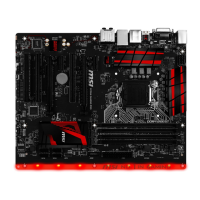
Do you have a question about the MSI H170A GAMING PRO and is the answer not in the manual?
| Form Factor | ATX |
|---|---|
| Socket | LGA 1151 |
| Chipset | Intel H170 |
| Memory Type | DDR4 |
| Memory Slots | 4 |
| Maximum Memory | 64 GB |
| Memory Speed | 2133 MHz |
| SATA 6Gb/s | 6 |
| M.2 Slots | 1 |
| USB 3.1 Gen1 Ports (Rear) | 4 |
| USB 3.1 Gen1 Ports (Front) | 2 |
| Audio | Realtek ALC1150 |
| RAID Support | RAID 0, RAID 1, RAID 5, RAID 10 |
| PCIe Slots | 2 x PCIe 3.0 x16, 2 x PCIe 3.0 x1 |
| USB Ports | 6 x USB 2.0 (4 rear, 2 via internal headers) |
| LAN | 1 x Gigabit LAN |
Lists essential tools and components required for system assembly and setup.
Details the supported CPU types and socket specifications for the motherboard.
Outlines the motherboard chipsets, H170A and B150A GAMING PRO.
Specifies memory support including DDR4, capacity, and features.
Lists available PCIe and PCI expansion slots and their configurations.
Details SATA and SATAe ports, including RAID support.
Details USB port specifications including types and speeds.
Describes the onboard audio codec and channel support.
Specifies the onboard LAN controller and its capabilities.
Describes the rear I/O ports available on the motherboard.
Lists and describes various internal connectors on the motherboard.
Identifies the I/O controller chip and its functions.
Details hardware monitoring features for temperature, voltage, and fan speed.
Specifies the motherboard's physical dimensions and form factor.
Lists key BIOS features and capabilities.
Lists bundled software applications for system enhancement and utilities.
Highlights performance-enhancing features for gaming.
Highlights proprietary features and technologies offered by MSI.
Provides a summary of key technical specifications and highlights.
Introduces LGA 1151 CPU, noting alignment marks for installation.
Offers guidance on the optimal order for installing memory modules.
Suggests slot usage for optimal performance with multiple graphics cards.
Details SATA 6Gb/s connectors for storage device connections.
Explains the SATA Express connector and its usage.
Describes ATX power connectors for PSU connection.
Details the front panel audio connector for audio jacks.
Explains the USB 2.0 connector for front panel USB ports.
Details the USB 3.1 Gen1 connector for front panel USB ports.
Details PWM and Voltage Mode fan connectors for CPU and system fans.
Explains fan speed management via BIOS and software.
Details connectors for front panel switches and LEDs.
Explains the connector for the chassis intrusion switch cable.
Describes the jumper for clearing CMOS and resetting BIOS settings.
Explains the debug LEDs indicating system status.
Provides methods to access the BIOS setup utility.
Lists keyboard shortcuts for common BIOS setup functions.
Explains various methods to reset BIOS settings to default.
Details updating BIOS using the M-FLASH utility.
Describes updating BIOS via MSI's Live Update 6 software.
Configures system date, time, and displays SATA port information.
Accesses advanced BIOS settings for system configuration.
Sets parameters for integrated peripherals like LAN, HDD, USB, audio.
Sets onboard SATA controller modes (AHCI/RAID).
Adjusts integrated graphics settings for optimal system performance.
Sets onboard USB controller and device functions.
Configures system power management features like EuP 2013 and AC Power Loss.
Sets Windows 8/8.1 specific configurations.
Enables faster system boot times by disabling devices.
Sets Windows secure boot to prevent unauthorized access.
Configures system wake up behaviors for sleep modes.
Sets the sequence of system boot devices and boot options.
Sets an administrator password for system security.
Sets a user password with limited access rights.
Configures Trusted Platform Module (TPM) functions.
Configures chassis intrusion detection and warning messages.
Enables memory module overclocking profiles for enhanced performance.
Allows manual control of CPU and system fan speeds based on temperature.
Controls CPU fan speed using Smart or Manual modes.
Allows manual adjustment of CPU voltage levels.
Displays and allows adjustment of DRAM frequency and voltage.
Adjusts integrated graphics frequency and voltage.
Enables remote control of COMMAND CENTER via mobile devices.
Provides steps for updating the system using LIVE UPDATE 6.
Allows control of motherboard and graphics card LED lighting.
Guides on configuring the Soft AP function for network sharing.
Describes creating, removing, and configuring user accounts and permissions.
Explains how to transfer files between local computers and servers.
Guides on creating and configuring a virtual RAM disk.
Details using IRST Option ROM for RAID management.
Guides on deleting RAID volumes, noting data loss.
Resets RAID structures and reverts drives to non-RAID status.
Explains degraded RAID status and re-establishing data mirroring.
Provides steps for handling a missing hard drive member in a RAID array.
Guides on diagnosing and resolving power-related issues.
Helps troubleshoot display and signal problems.
Provides steps for issues after BIOS updates.
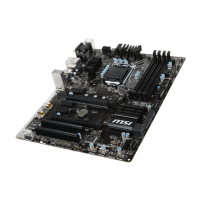
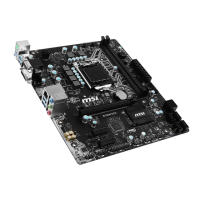
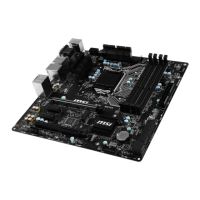


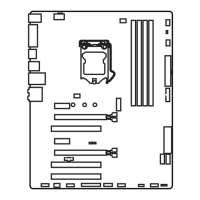

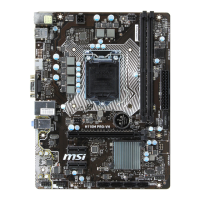
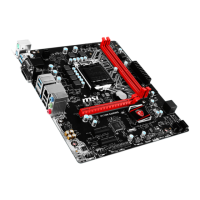
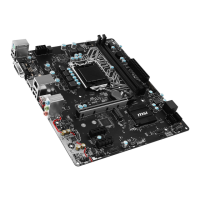

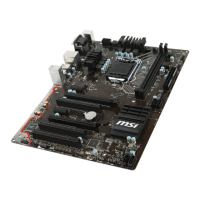
